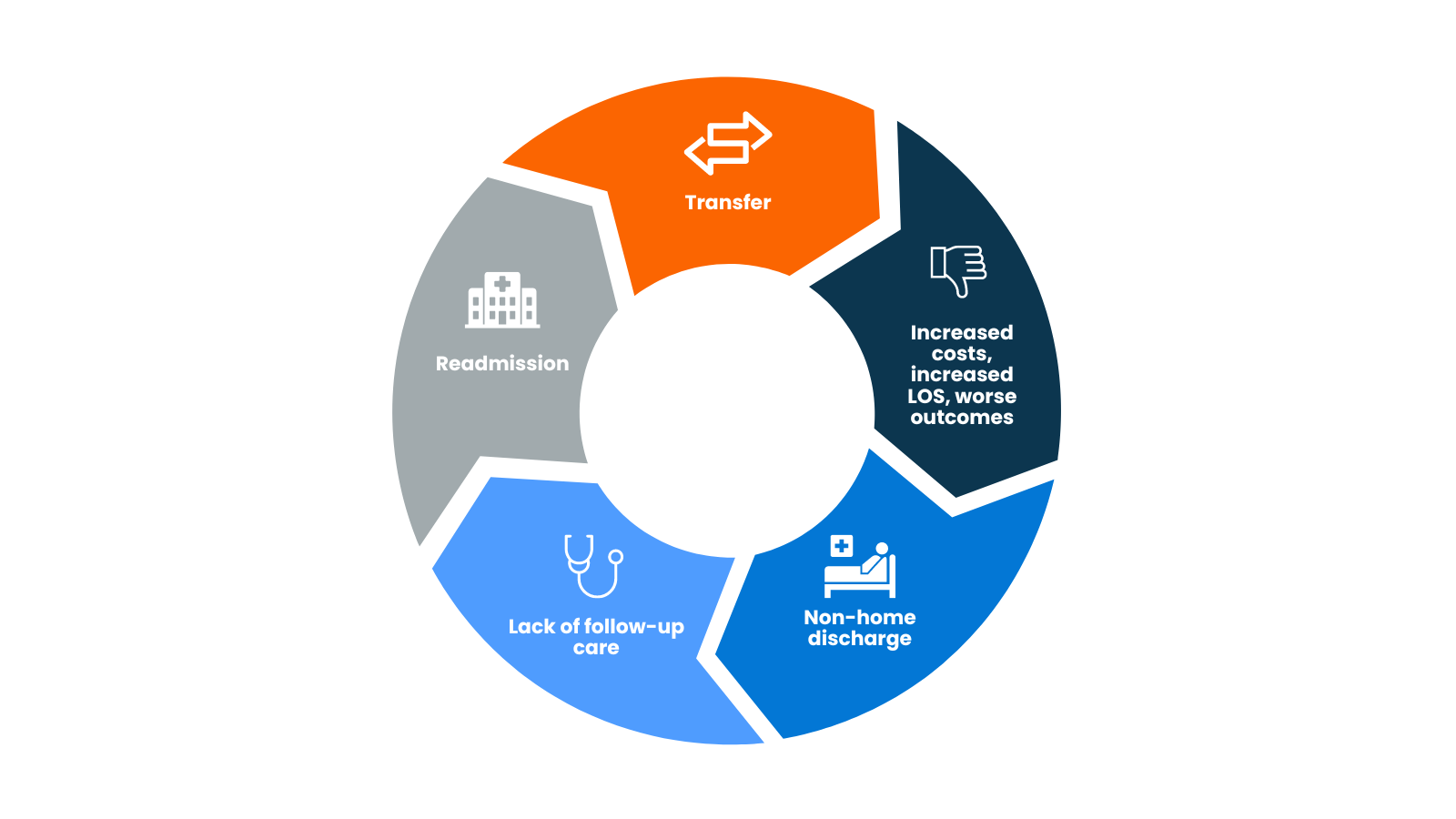Hospital readmissions have many causes, and reducing readmissions can involve addressing multiple non-health care factors, such as transportation. But hospitals can reduce the likelihood of readmission by avoiding transferring patients to another hospital for care. With specialty telemedicine, hospitals can have in-house care for patients for a number of acute care needs and not need to transfer them to another hospital for care, possibly triggering the readmission cycle.
The Link Between Transfers and Readmissions
Transferring patients away from their local communities for care can kick off the readmission cycle. Communication errors, delays in care, and information gaps can result from transfers, increasing the likelihood that patients will need to be readmitted to the hospital.
Studies have shown that outbound transfers correlate with higher costs, longer lengths of stay, and worse outcomes for patients. A high number of transfers can also erode the relationship between patients and their local hospital, where many patients expect their care needs to be met.

The readmission cycle
Reducing Transfers and Readmissions With Telemedicine
Reducing outbound transfers is the key to breaking the vicious readmission cycle that plagues both patients and providers.
Access TeleCare equips hospitals of any size with timely access to specialty care experts, reducing their need to transfer complex, high-acuity patients. From complex neurological care to time-sensitive ICU care and round-the-clock hospitalist coverage from admission to discharge, Access TeleCare helps hospitals disrupt the readmission cycle by taking costly transfers out of the equation.
Contact us to learn more about our telemedicine programs and see how telemedicine can reduce transfers and readmissions for your hospital.








